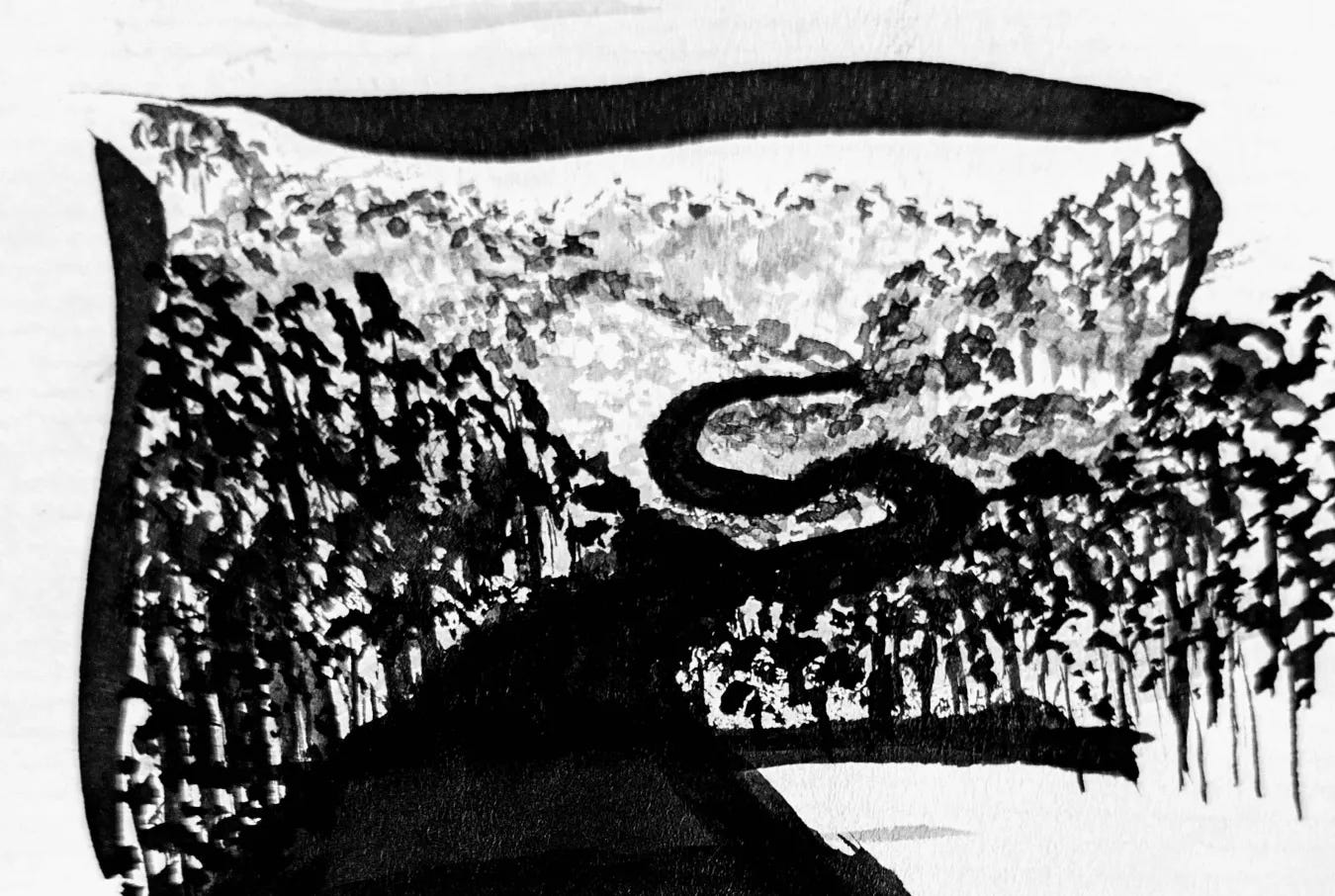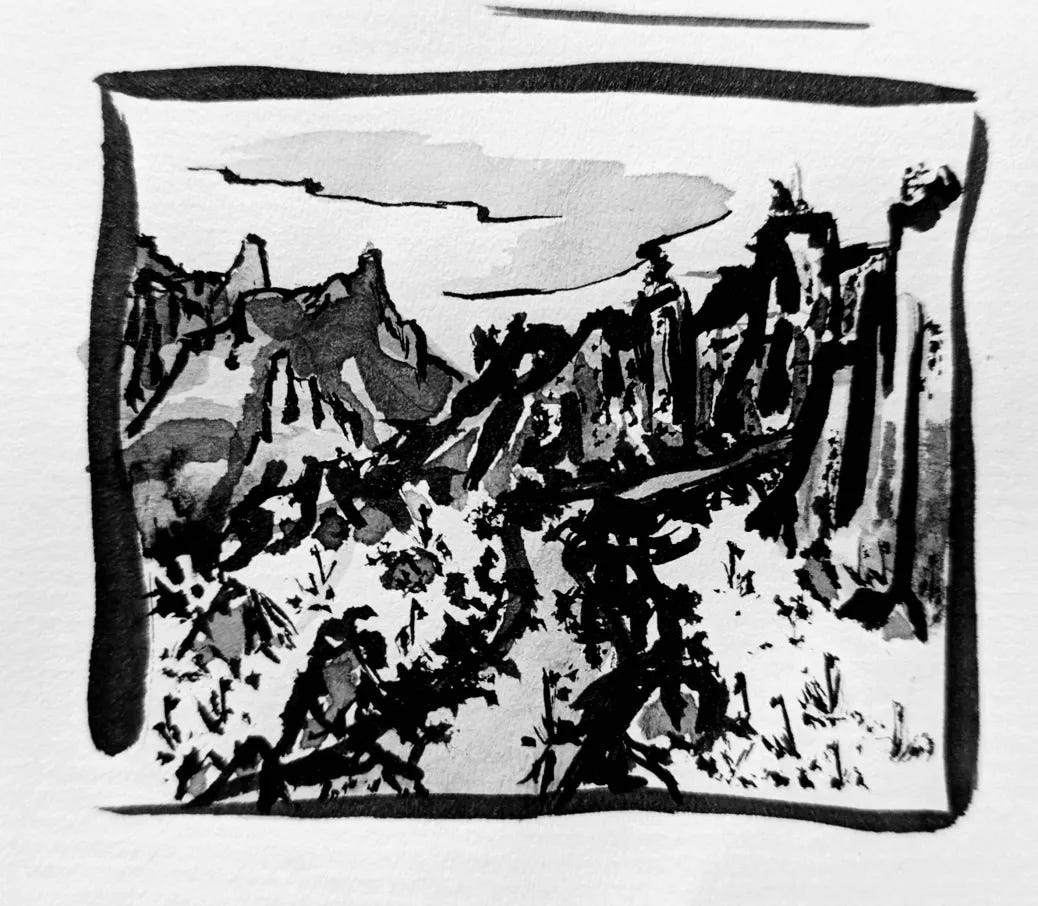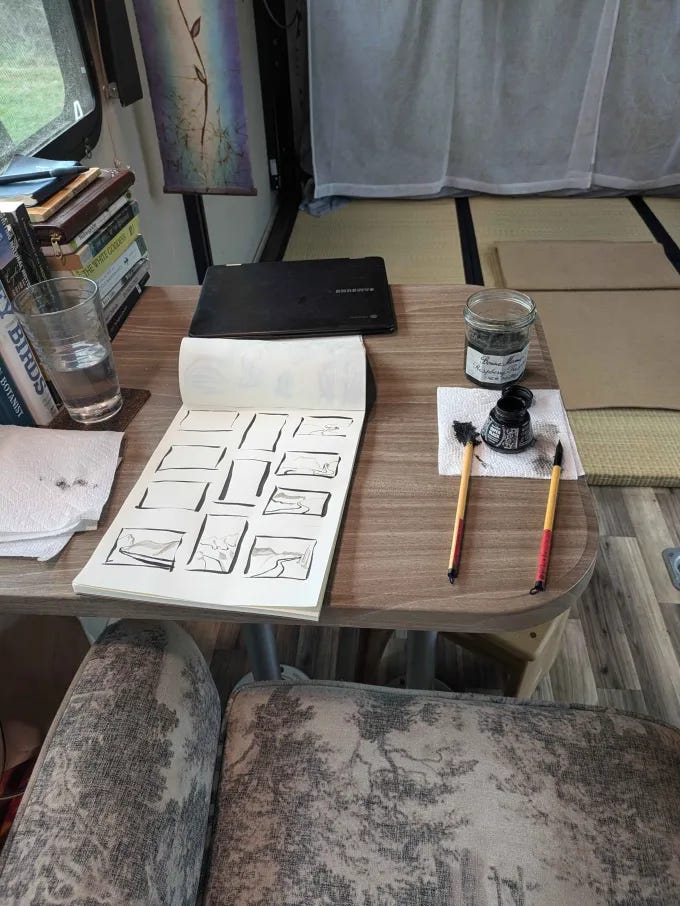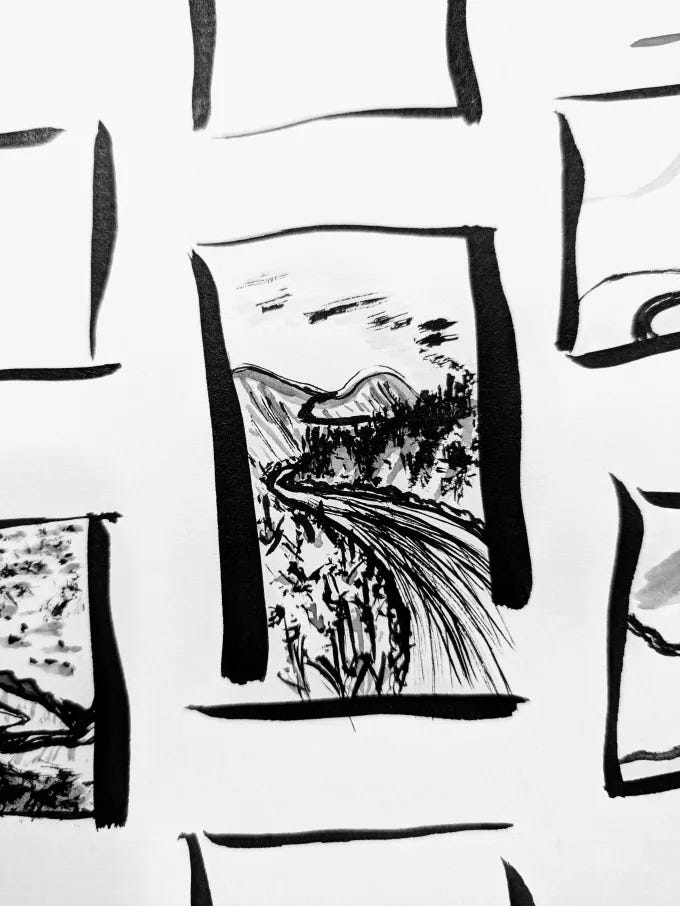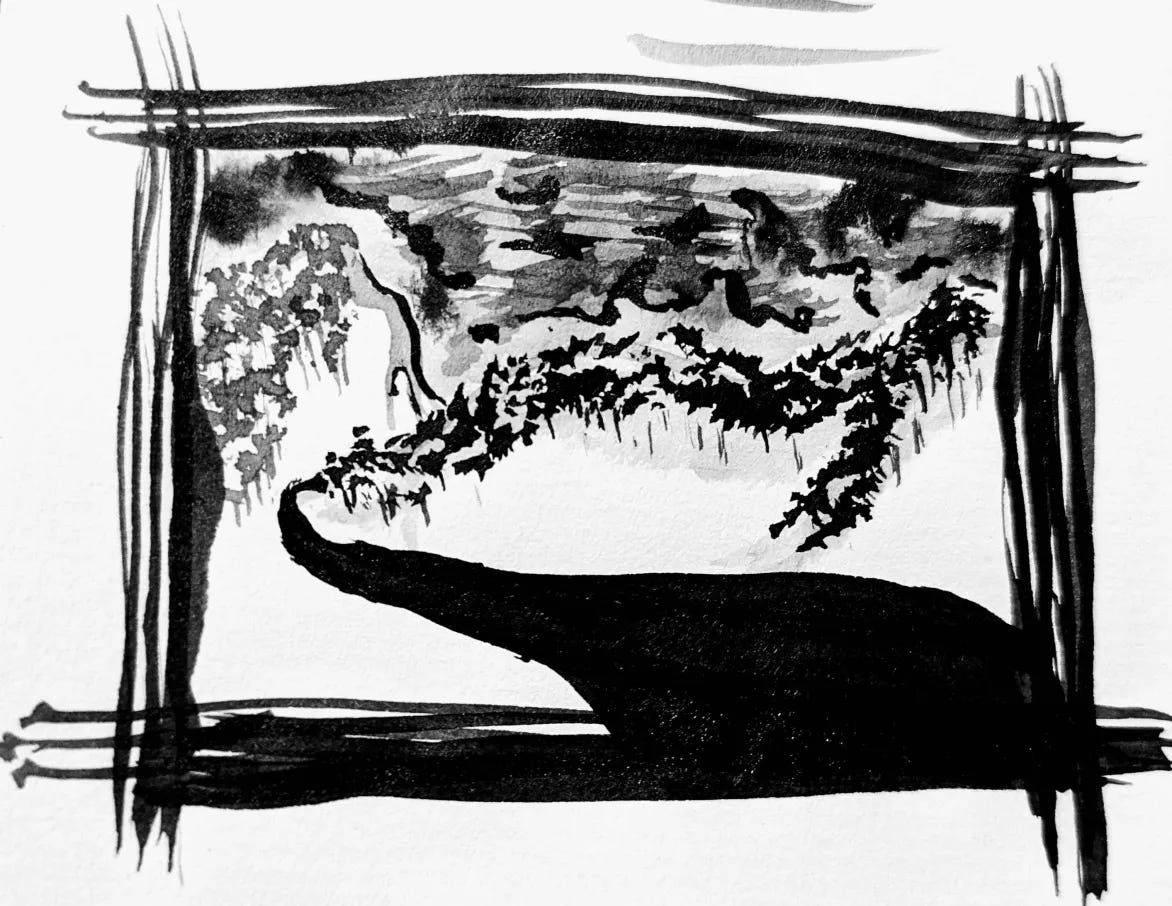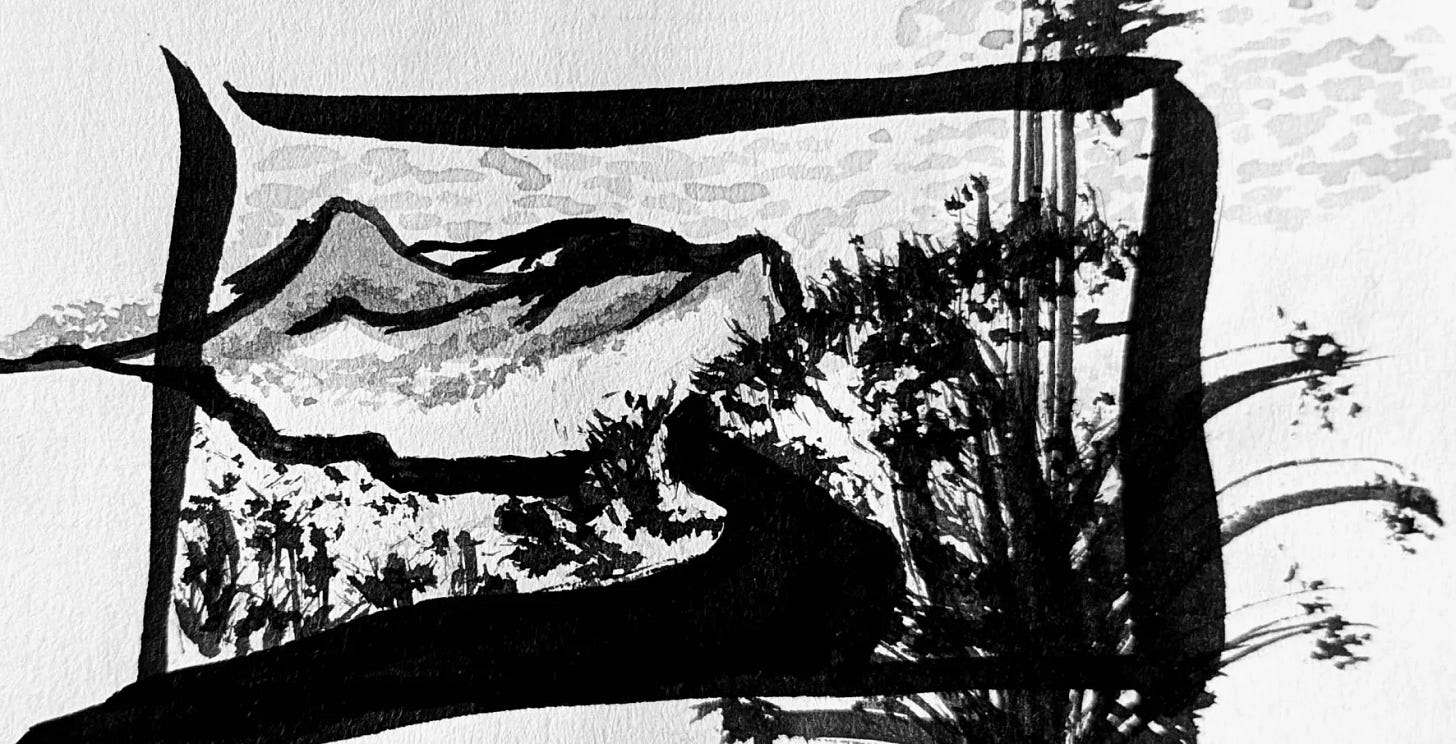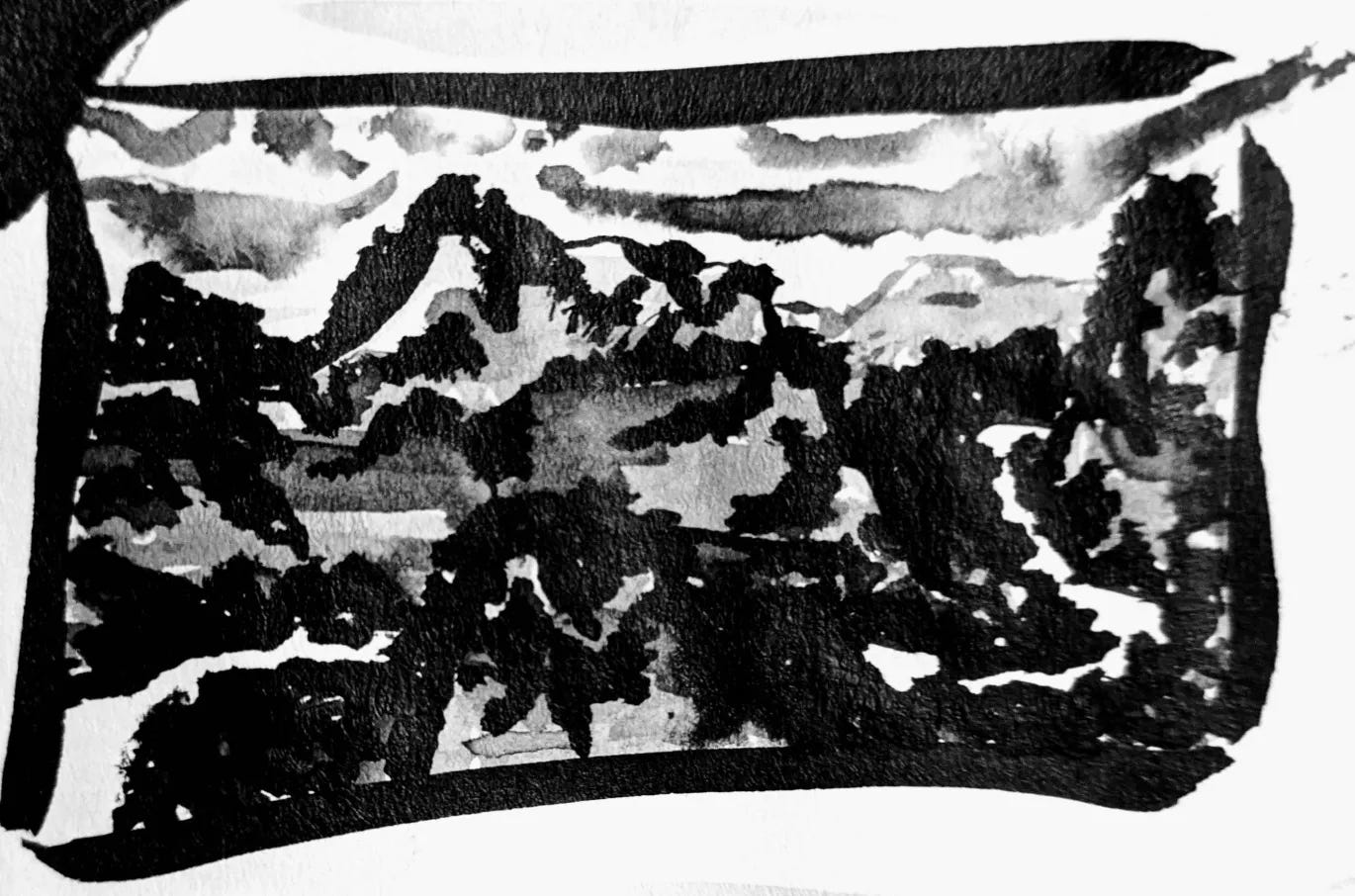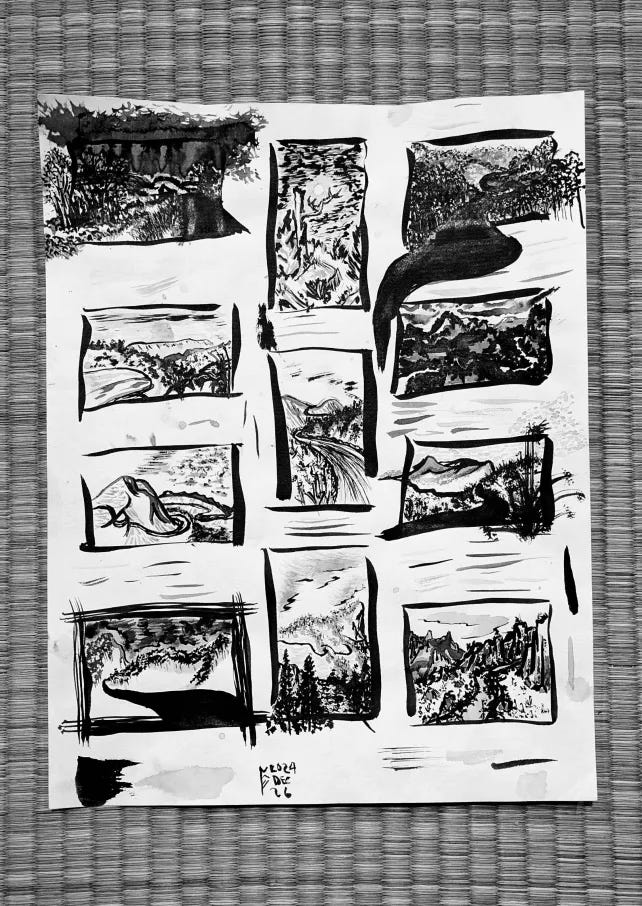Landscape art that conveys “unspoiled” or “pristine” nature rarely resonates with me.
As much as I love to spend my precious time outside, away from settlements, diving deep into places where human sounds are too far off to carry, I find that art takes me to greater emotional depths when the human element is present.
I’ve spent extended periods of time in places where the human element is noticeably absent: the boulder-strewn scree slopes and bitter glaciers of my summer in North Cascades come to mind, or the handful of times I’ve been on a boat far out of sight of the nearest shore. These places are awe-some, in the most literal sense of the word.
Awe- an overwhelming feeling of reverence, admiration, fear…
Wilderness invokes a feeling of vastness bigger than the sum of every human life that has ever been, and with that feeling comes the sobering thought that “if I were to meet Death right now amidst this towering, shadowy, old, old forest, absolutely nothing that lives here ought to be expected to intervene on my behalf.”
I think this is why I love the sprawling hinterlands of ruraldom. When contemplating beautiful landscapes, I find myself time and again encountering the continuum of urban-rural-wilderness (sorry suburban, you aren’t invited).
When I look upon a landscape painting, I need a place to insert myself. Enter, The Road.
(Or perhaps. . . The Footpath)
The road, whatever form it takes, invites the viewer into the landscape. It provides scale and reference points for an otherwise vast and aloof nature. The road does imply the city, because the humans who built it imply the city, but when beautifully articulated, the road accentuates the landscape rather than overwhelming it.
So that’s how this project began, as road-painting practice. In fact, it wasn’t originally supposed to be a project so much as an exercise. I was going to rough in some terrain and map different roads through each scene, focusing on getting the angles and turns correct as the vanishing point shifts and the elevation grade moves up and down or the road tucks out of sight then reappears deeper in the background.
And for five or six frames, that’s what I did.
But then I had a wild hare moment and started filling in details, and what do you know, I really liked the results. I hadn’t realized I could express such nuance in such a small space.
There was no need to keep the scenes rough. I could get in my reps on road-painting practice and a whole lot more.
Life is full of situations where a small mistake reveals an unexpected opportunity. In this case, the texture of the road got messed up and the only way I could think to fix it was by blacking it in. This inadvertently took me outside my original frame. I widened the frame to make up for it, but . . .
. . . on the next rep I exited the frame with deliberate intent. I loved the results.
Rather appropriately, leaving the frame led to a short detour off-road where I illustrated a few scenes for the January installment in my nature-connection short story series.
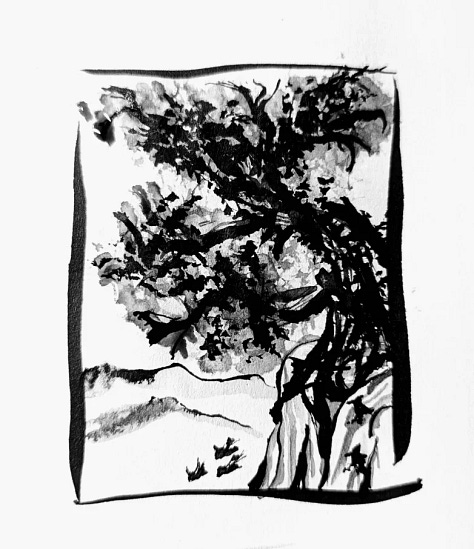
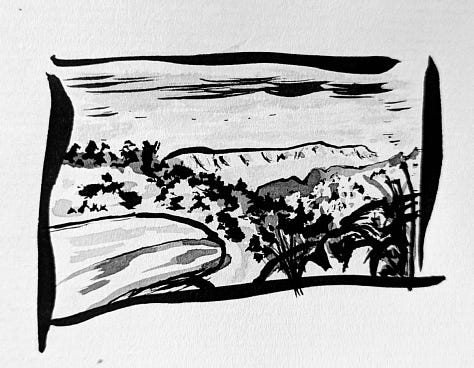
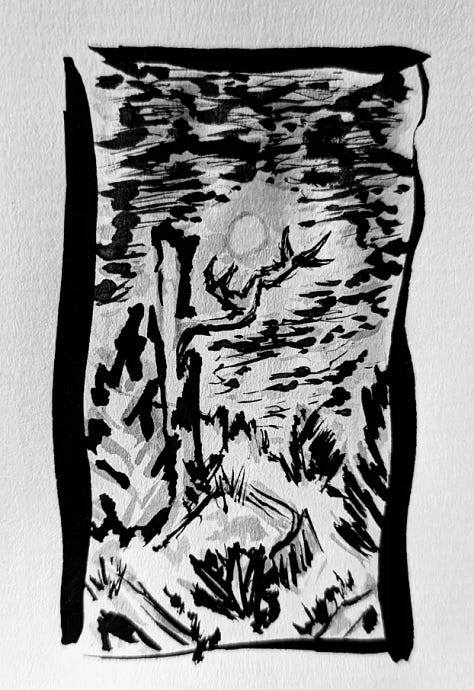
With the story published, I got back to work on my road-painting project.
. . . and after almost two weeks I was just about done with the page that was only supposed to have been a single day’s exercise.
(This calls for some hot tea!)
By the end, I was feeling experimental. . . or maybe tired of how long the project had gone on, sometimes its hard to tell, but this one began as a road and ended as a river.
Whatever happens, happens.
-PF




